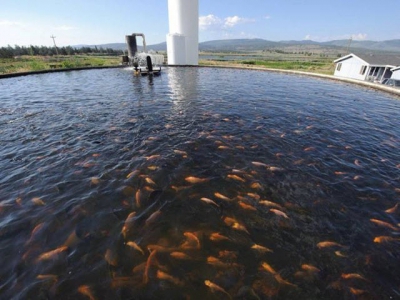New study aims to make aquaculture work safer

Researchers will look at a wide range of activities across broad geographies
Occupational safety and health (OSH) issues affecting the world’s large and growing number of workers in the aquaculture sector are the focus of a new global study.
At the end of last year, experts met at the University of Stirling in Scotland to consider the OSH challenges faced by an estimated 18 million workers in marine and freshwater locations, and how safety can be improved.
Until now, the risks posed by fish farming have been largely overlooked, according to leading researcher, Professor Andrew Watterson of Stirling’s Faculty of Health Sciences and Sport.
The wide scope of the study covers activities from diving and construction to harvesting, processing and transportation of products, and a geographical range including Africa, Australasia, Europe and North America. Workplace injuries, occupational disorders and issues such as stress, long shifts and lone working will be covered by the analysis.
Existing legislation, codes, standards and best practice will form the basis of the second part of the study. The feasibility of adapting regulations and guidelines for the agriculture and food industries will be examined to protect the global aquaculture workforce.
Watterson highlighted the most important aspects of the study as the identification of effective OSH measures in current use across the world, and how to raise standards and reduce the risks for fish farm operators.
“Our report will pick up opportunities and constraints faced by small-scale, rural aquaculture farmers when introducing or improving OSH risk management measures in their farms,” he said. “It will also identify further research and development needs on OSH in aquaculture, including information gaps relating to hazards and risks.”
The study is being funded by the Committee of Fisheries at the United Nations’ Food and Agriculture Organization, COFI, and administered by the International Union of Food Workers, IUF.
A report by independent research organization SINTEF in 2016 found that salmon farming was Norway’s second most dangerous sector behind fishing. Between 1982 and 2015, 34 people working in the country’s aquaculture industry died, and “a great deal” of major and minor accidents had resulted in injuries.
In the U.S., meat and poultry packers and processors have been making progress on workplace safety. For the most recent year studied, 2016, the incidence of non-fatal occupational injuries and illnesses reached an all-time industry low of 5.3 per 100 full-time workers.
Related news
 Benefits from CPTPP to shrimp exports not much
Benefits from CPTPP to shrimp exports not much It has brought just a few benefits to Vietnam’s shrimp exports, but it is recognized as a vital factor to complete the previous Bilateral and Multilateral Agre
 Origin fraud threatens duties on Vietnamese wood, seafood exports to US
Origin fraud threatens duties on Vietnamese wood, seafood exports to US Vietnam’s wood and seafood exports could be the next to attract U.S. tariffs if it fails to prevent goods origin fraud, experts have warned.
 Seychelles set for commercial aquaculture debut
Seychelles set for commercial aquaculture debut The Seychelles has announced plans to launch its aquaculture sector this summer, with production licences for five marine species scheduled to be issued